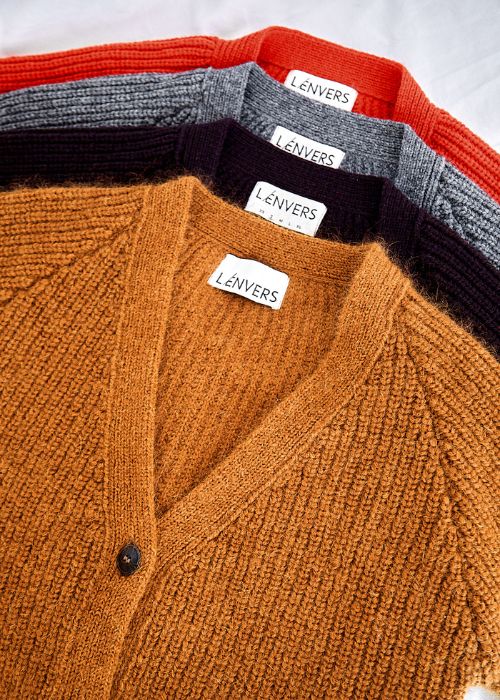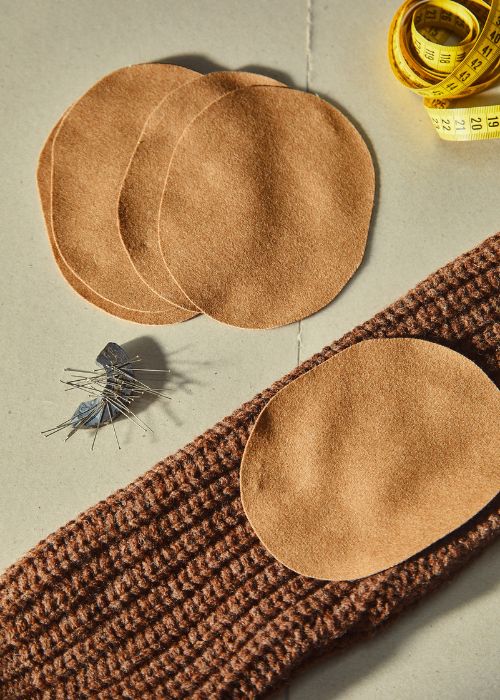THE 4 R's OF SUSTAINABLE FASHION

The fashion industry is facing increasing anxieties regarding its participation in increasing greenhouse gas emissions and organic waste. Fast fashion, which has become the new norm, is one of the main drivers of climate change. This has raised the importance of embracing the four Rs— Reduce, Reuse Recycle, and Repurpose as elements of a new fashion strategy.
At L’Envers, we uphold these principles by choosing to use renewable materials like wool and organic cotton to guarantee that our manufacturing methods have a significant impact on aiding the environment.
In this blog, we discuss how weaving in the ‘4 R’s’ of sustainable fashion into our daily lives can reduce waste, reduce consumption, and save materials for future generations, leading the fashion industry towards a more sustainable future.
REDUCE
The first R of sustainability, Reduce, focuses on consuming less resources and minimizing waste right from the production stage. In fashion, this means creating high-quality, long-lasting clothes that require fewer resources, materials, and energy to produce. This lessens the environmental impact fast fashion has. Here are some tips to Reduce the environmental impact:
- Buy Less, Choose Better: Make informed choices. Instead of buying many fast fashion pieces, give priority to timeless and long-lasting ones. At L’Envers, we focus on quality, durable pieces that withstand the test of time.
- Timeless over Trendy: Choose items with timeless designs, and clothing that is fashionable throughout several seasons — the kind of clothes you can wear time and again for years instead of fast fashion staples. By investing in trendy, high-quality items that last longer, we reduce the need for constant replacement thus resulting in less waste going to landfills. This is a great way to lessen consumer consumption.
- Mindful Shopping: Before buying new clothes, decide if you really need that new piece of clothing or have similar items at home. Think twice!
- Quality Materials: Choose garments made from sustainable materials like organic cotton, mohair wool, or merino wool, which have a lower environmental impact and are designed to last longer.
When you go shopping, small changes, such as choosing reusable over single-use plastic bags, also help promote a more sustainable approach to everyday living.
REUSE
The second R is Reuse. A key element of reusability in the world of fashion is that it seeks to extend the life cycle pattern of clothes and save valuable materials. Let's check out the importance of reusing and incorporating sustainable practices into our daily lives:
- Smart wardrobe choices: Opting for pieces that are both classic and adaptable can result in cutting down on shopping trips and curbing the demand for new garments. This strategy helps lower the carbon footprint of the fashion industry.
- Creative transformation: Breathing new life into clothes involves more than just wearing them over and over again. It's also about exploring innovative ways to revamp old pieces.
- Co͏mmunity Sharing: T͏akin͏g pa͏rt in clothing tr͏ade events wit͏h f͏riends͏ or͏ m͏embers ͏o͏f t͏he co͏mmunit͏y serves as a͏ great ͏w͏ay to͏ upda͏te͏ you͏r wardrobe ͏wi͏thou͏t c͏ontrib͏ut͏ing to co͏nsum͏erism. Sh͏aring clo͏the͏s also ͏fo͏ste͏rs a se͏nse of ͏comm͏unity ͏while promot͏ing an eco-fri͏end͏ly͏ f͏utur͏e.
- Giv͏ing back: Donating ͏gently͏ worn clot͏hing to chariti͏es or͏ th͏rift store͏s͏ ben͏efits those i͏n͏ n͏ee͏d and enables o͏thers to extend͏ the li͏fe of the͏se͏ garme͏nts.
- Repairing and Maintaining: Looking after your clothes by following proper care practices such as washing and storing them correctly plays a role in prolonging their lifespan. You might also want to consider patching clothes rather than throwing them away whenever they get torn.
By embracing the idea of reusing clothes we can contribute to creating a more sustainable environment for future generations and cultivating a stronger bond with our planet. Remember, we create the world we want to live in!
RECYCLE
Recycling is important not only to the fashion industry but to our lives in general. It is also one of the most important pillars of the 4 R's of sustainable fashion!
Recycling helps lessen waste and conserve valuable resources we might need in the future. When it comes to clothing, it involves transforming old or unused clothing into new materials, reducing the dependency on new, valuable resources. Let's check out some important benefits of recycling:
- Resource Conservation: When we recycle, we save energy and natural resources. For example, recycling a ton of cotton can save over 20,000 gallons of water, a resource often wasted in new garment production.
- Choose Eco-friendly Fa͏brics: It's important to be aware of the͏ production ͏process͏ when you buy new ͏c͏loth͏es. Always look for͏ cl͏othi͏n͏g made from ͏ma͏t͏erials that are renewable like organic cot͏ton, w͏o͏ol, and ͏other natural fibers.
- Consumer ͏Participation: We encourage consumers ͏to recycle their old clothing by using the proper recycling ͏bins or giving away clothes͏ once in a while. By donating clothing͏ you do ͏not͏ need, you can not only help close the lo͏op in the fashion life͏cycle but also help those in͏ need.
When we properly recycle and move waste materials and make it a part of our daily lives, we take steps toward a cleaner environment and a more sustainable fashion industry. No matter how small you might think it is, your actions do matter!

REPURPOSE
Off the 4 R's of sustainability, repurpose is the last in line. It is the process of converting old clothes into new usable forms. This minimizes waste, conserves fewer resources, and also ebbs the flow of creativity within the fashion community.
What is repurposing then? Repurposing is all about reusing and finding new uses for older clothes. Here are some ways to do it:
- DIY Projects: Repurpose old clothes to make them look new. Ex: Sew a pair of mittens or scarf from an old sweater.
- Alter Pieces: Sometimes all the old garments need is a little nip and tuck to bring life back into them. Cut a dress to be a top or remove sleeves from the long-sleeved shirt, or even patch your old sweater to prolong its life!
- Fabrics Scraps: Leftover fabric scraps can be recycled in arts and crafts projects, take home decor to the next level, or serve as rags for cleaning. For example, at L’Envers, we used fabric scraps to make scrunchies and elbow patches.
As an added benefit, repurposing helps save resources by limiting the use of new materials. It seems like a win-win to — waste not, want not.
Repurposing these fabrics plays a role in lowering the amount of textiles that end up in landfills, which helps ease the environmental impact of the fashion industry. It also helps save resources by saving you the need for new material, thus also helping you save money. Re-using current fabric leads to less energy and resources needed for the production processes for new products.
Conclusion
Let's wrap it up! Four R's of fashion: Reduce, Reuse, Recycle and Repurpose is what we can think about the transition from the fast to slow fashion industry.
By living according to these principles each day, we can all take steps toward lowering our carbon footprints, and ecological footprint, and limiting the release of greenhouse gases. Choosing durable clothing options, recycling clothes, and opting for reusable bags over single-time-use ones, are how we all move towards sustainability goals.
Every little thing, no matter how small it is, is a step towards a cleaner environment and greener future.
The 4 R's of sustainable fashion leads us to an industry that brings a positive impact on our planet and generations ahead.
FREE SHIPPING
from 300€ to Europe, from 320€ to North America, UK, Swiss, from 360€ to Asia
FLEXIBLE EXCHANGE AND RETURNS
within 30 days
3-PART PAYMENTS
with SplitIt
CUSTOMER SERVICE
Contact Us for advice and customization


